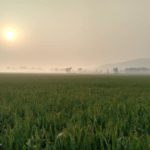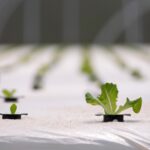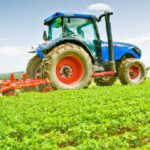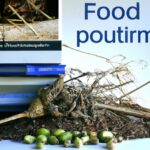Sustainable agriculture practices encompass a range of methods aimed at minimizing the negative impact of farming on the environment while ensuring long-term food production. These practices prioritize soil health by promoting organic matter and reducing soil erosion. They encourage biodiversity through crop rotation, intercropping, and the preservation of natural habitats. Water conservation techniques, such as drip irrigation and rainwater harvesting, are also implemented. Integrated pest management strategies minimize the use of chemicals and instead emphasize natural pest control methods to maintain ecological balance. Sustainable agriculture practices enable farmers to meet the needs of the present without compromising the ability of future generations to meet their own needs.
Sustainable agriculture practices aim to maintain and enhance the productivity of land while minimizing negative environmental impacts. These practices promote long-term ecological balance, economic viability, and social benefits. Here are some key sustainable agriculture practices:
1. Crop rotation: This involves alternating the types of crops grown in a particular field over time. Crop rotation helps to replenish soil nutrients, prevent soil erosion, and reduce pest and disease problems.
2. Conservation tillage: Instead of extensively tilling the soil, conservation tillage aims to disturb it as little as possible. This approach helps to reduce soil erosion, conserve moisture, promote earthworm activity, and sequester carbon in the soil.
3. Organic farming: Organic farming avoids the use of synthetic fertilizers, pesticides, and genetically modified organisms (GMOs). It promotes the use of compost and natural fertilizers, biological pest control, and crop diversity to maintain soil health and biodiversity.
4. Agroforestry: This involves integrating trees or shrubs with agricultural crops. Agroforestry systems provide multiple benefits such as improved soil fertility, increased crop productivity, reduced water runoff, and carbon sequestration.
5. Water conservation: Sustainable agriculture practices prioritize efficient water management techniques like drip irrigation, precision sprinklers, and rainwater harvesting. These methods minimize water use, reduce soil erosion, and protect water quality.
6. Integrated pest management (IPM): IPM focuses on using a combination of biological, mechanical, and chemical control methods to manage pests and diseases. This approach minimizes dependence on chemical pesticides and encourages natural pest predators.
7. Livestock management: Sustainable livestock practices prioritize animal welfare, access to pasture, and responsible manure management. These practices reduce the environmental impact of livestock, promote biodiversity, and enhance soil fertility.
8. Reforestation and afforestation: Planting trees and restoring forests helps to sequester carbon dioxide, prevent soil erosion, improve air and water quality, and enhance biodiversity.
Sustainable agriculture practices are crucial for preserving the health of ecosystems, ensuring food security, and combating climate change. By adopting these practices, farmers can contribute to a more sustainable and resilient agricultural system.
Crop rotation
Crop rotation is a key practice in sustainable agriculture that involves systematically changing the type of crops planted in a specific field over a period of time. This process helps maintain the health and fertility of the soil, prevent pest and disease infestations, control weeds, and ultimately increase crop yields.
One of the main benefits of crop rotation is the prevention of soil erosion and nutrient depletion. By alternating crops with different nutrient requirements, the soil is given the opportunity to replenish its nutrient levels naturally. For example, leguminous crops such as peas or beans can be planted in one season to fix nitrogen from the atmosphere and leave it in the soil for subsequent crops to use. This reduces the need for synthetic fertilizers, which helps to minimize environmental pollution and decrease production costs for farmers.
Crop rotation also plays a crucial role in pest and disease management. Certain pests and diseases are specific to certain crops, so by rotating crops, farmers can disrupt the life cycles of these pests and diseases, reducing their populations and the need for chemical pesticides. Additionally, some crops have natural repellent properties that discourage pests from infesting the soil, thus providing a natural defense mechanism.
Weed control is another significant advantage of crop rotation. Different crops have varying growth habits, which can help suppress the growth of weeds. For example, crops with dense foliage can shade out and outcompete weeds, minimizing the need for herbicides. Furthermore, by interrupting the life cycles of weed species, farmers can prevent weed populations from building up over time.
Implementing crop rotation also allows for better crop diversity and financial stability for farmers. Growing a wide range of crops can mitigate the risk of a complete crop failure if a single crop is affected by adverse weather conditions, pests, or diseases. Diversification can also open up new market opportunities, as different crops cater to different consumer demands.
In order to effectively implement crop rotation, farmers must have a good understanding of the crops they are growing and their specific nutrient and water requirements. Planning and proper management are crucial to ensure the success of crop rotation systems.
In conclusion, crop rotation is an essential component of sustainable agriculture practices. It helps maintain soil fertility, prevents pest and disease outbreaks, controls weeds, and provides farmers with more financial stability. By implementing crop rotation, farmers can mitigate environmental impacts, reduce input costs, and ensure the long-term productivity and sustainability of their farming operations.
Agroforestry
Agroforestry is a sustainable agriculture practice that combines the cultivation of crops and trees in a mutually beneficial manner. This land management system involves the deliberate integration of trees, crops, and sometimes livestock on the same piece of land, providing multiple benefits to the environment, farmers, and local communities.
One of the key advantages of agroforestry is its ability to improve soil health and fertility. By planting trees alongside crops, the practice helps to prevent soil erosion and retain moisture, thus reducing the need for irrigation. The tree roots also help to improve soil structure, promoting nutrient cycling and enhancing overall soil fertility. Additionally, the leaves that fall from the trees serve as natural mulch, further enriching the soil with organic matter.
Agroforestry systems also contribute to biodiversity conservation. The presence of trees offers habitat and food for a diverse range of wildlife, including birds, insects, and small mammals. In turn, these animals can provide natural pest control services to the crops, reducing the reliance on chemical pesticides. Agroforestry systems often include a variety of tree species, enhancing biodiversity even further.
Furthermore, agroforestry has the potential to mitigate climate change by sequestering carbon dioxide from the atmosphere. Trees are effective carbon sinks, absorbing and storing carbon in their biomass, thus aiding in the reduction of greenhouse gas emissions. Agroforestry practices also promote sustainable energy production, as some tree species can be used as a source of biomass or fuelwood.
In terms of economic benefits, agroforestry diversifies farmers’ incomes by providing additional products to sell or use. The cultivation of trees alongside crops allows farmers to harvest fruits, nuts, timber, or non-timber forest products. This diversification reduces income variability and can enhance the resilience of farming communities.
Agroforestry is also valuable for its ability to enhance water management. The presence of trees helps to regulate water cycles, reducing runoff and improving water quality. The shade provided by the trees reduces evaporation, thus enabling crops to thrive in arid and semi-arid regions.
Overall, agroforestry is an effective and sustainable approach to agriculture that brings together elements of both forestry and conventional farming practices. Its ability to improve soil health, promote biodiversity, contribute to climate change mitigation, diversify income sources, and enhance water management make it a valuable tool for achieving sustainable development and food security.
Organic farming
Organic farming is a method of agriculture that emphasizes the use of natural and ecologically sustainable practices. It is a holistic approach to farming that aims to preserve soil health, protect biodiversity, and minimize the use of synthetic inputs. Organic farmers prioritize building healthy soils, reducing chemical usage, and promoting animal welfare.
One of the key principles of organic farming is the avoidance of synthetic fertilizers and pesticides. Organic farmers rely on natural methods to manage pests and diseases, such as crop rotation, companion planting, and the use of biological controls. Instead of synthetic fertilizers, organic farmers use techniques like composting and cover cropping to improve soil fertility and structure.
Another important aspect of organic farming is promoting soil health. Organic farmers prioritize soil conservation and work towards enhancing its organic matter content and biodiversity. By maintaining a healthy soil ecosystem, organic farmers ensure the long-term productivity and sustainability of their farms. Additionally, healthy soils contribute to carbon sequestration, helping to mitigate climate change.
Organic farming also emphasizes the preservation of biodiversity. By avoiding the use of synthetic chemicals, organic farmers protect beneficial insects, birds, and soil organisms that contribute to ecosystem stability. Organic farms often provide refuge for wildlife and cultivate a diverse range of crops, which helps to maintain genetic diversity and resilience in the face of climate change and pests.
Animal welfare is another key consideration in organic farming. Organic livestock are raised with access to outdoor areas, adequate space, and an emphasis on natural behaviors. They are also fed organic feed and are not treated with growth hormones or antibiotics unless absolutely necessary for their health.
Organic certification is an important aspect of the organic farming system. Certification ensures that organic products meet specific standards and are produced according to organic guidelines. This provides consumers with confidence in the authenticity and integrity of organic products.
Organic farming has gained popularity worldwide as consumers become more aware of the environmental and health implications of conventional agricultural practices. The demand for organic products continues to increase, leading to the growth of organic farming operations globally.
In conclusion, organic farming is a sustainable agricultural practice that promotes ecological balance, soil health, biodiversity, and animal welfare. It is a holistic approach to farming that takes into account the long-term sustainability of the land, environmental protection, and the well-being of both animals and humans. By following organic farming methods, farmers contribute to a healthier and more sustainable food system for the benefit of present and future generations.
Water conservation
Water conservation is a vital component of sustainable agriculture practices. With increasing concerns over water scarcity and the need to address the environmental impact of agricultural activities, implementing effective water conservation measures is imperative.
One of the key aspects of water conservation in agriculture is minimizing water wastage. This can be achieved through various methods, such as employing efficient irrigation techniques. For example, drip irrigation systems deliver water directly to the plant roots, reducing evaporation and ensuring that water is used more efficiently. Additionally, precision irrigation technologies use sensors and data analysis to determine the crop’s water requirements, allowing for targeted and optimized irrigation schedules.
Managing soil moisture is another crucial aspect of water conservation. Proper soil moisture management helps avoid over-irrigation or waterlogging, while still providing the necessary hydration for crops. Techniques like controlled drainage systems can help retain water in the soil profile, reducing runoff and improving water absorption by plants.
Crop selection and rotation play important roles in water conservation as well. By choosing crops that are well-adapted to local conditions, farmers can optimize water usage. Some crops require less water compared to others and can thrive in arid or semi-arid regions. Furthermore, implementing crop rotation practices helps maintain soil health, preventing increases in water demand due to soil degradation.
Cover crops are another effective water conservation technique. By planting cover crops during fallow periods or in between cash crops, the soil surface is protected from erosion caused by rain or irrigation. This allows for better moisture retention in the soil, reducing the need for additional watering.
Conservation tillage practices also contribute to water conservation efforts. By minimizing soil disturbance, such as plowing or tilling, moisture loss through evaporation is significantly reduced. This technique helps maintain soil structure and moisture levels, improving water efficiency.
In addition to on-farm practices, effective water management systems at the farm level can contribute to water conservation. For instance, regularly maintaining and repairing irrigation systems like pipes, pumps, and sprinklers ensures efficient water delivery and minimizes leaks. Additionally, implementing rainwater harvesting systems can help capture and store rainwater for future use, reducing dependence on freshwater sources.
Educating farmers and raising awareness about the importance of water conservation practices is crucial for widespread adoption. Government and non-governmental organizations can play a significant role in providing training, resources, and financial incentives to support farmers in implementing water-saving techniques.
In conclusion, water conservation is a critical aspect of sustainable agriculture practices. By minimizing water wastage, managing soil moisture, selecting appropriate crops, implementing cover crops, adopting conservation tillage practices, and implementing efficient water management systems, farmers can contribute to the preservation of water resources while ensuring the long-term viability of their agricultural activities.
Integrated pest management
Integrated pest management (IPM) is a method of controlling pests in an agricultural system by utilizing various strategies and techniques in a holistic and environmentally-friendly manner. The objective of IPM is to reduce the reliance on synthetic pesticides while effectively managing pest populations and minimizing their impact on crop yields.
One of the key principles of IPM is prevention. This involves implementing practices that discourage pest infestations, such as crop rotation, proper sanitation, and the use of resistant crop varieties. By adopting preventive measures, farmers can create an unfavorable environment for pests and reduce the need for pesticide applications.
Monitoring and identification of pests play a crucial role in IPM. Regular scouting of fields and monitoring pest populations help farmers determine the extent of infestation as well as the economic threshold at which intervention is warranted. This data is crucial for making informed decisions regarding pest control strategies.
IPM emphasizes the use of biological control methods to manage pest populations. This involves the introduction of natural enemies of pests, such as predators, parasites, or pathogens, into the ecosystem. By promoting a balanced ecosystem, IPM allows natural enemies to keep pest populations in check, minimizing the need for chemical interventions.
When pesticides are necessary, IPM focuses on the use of selective, low-impact products. This means choosing pesticides that have a minimal impact on non-target organisms and the environment. Additionally, IPM advocates for the targeted application of pesticides, such as spot treatments or localized applications, rather than blanket sprays. This reduces pesticide exposure and ensures their effectiveness in managing pests.
Cultural control practices are another important aspect of IPM. These practices involve altering the agricultural environment to minimize pest pressure. For example, planting trap crops or utilizing physical barriers can divert pests away from the main crop. Crop diversification is also encouraged as it reduces the buildup of pest populations by disrupting their life cycles and decreasing their preferred habitat.
Furthermore, education and collaboration are integral components of IPM. Farmers are educated about the importance of IPM and its various practices through extension programs and workshops. Information exchange and collaboration among farmers, researchers, and agricultural experts foster the development and implementation of effective IPM strategies.
In conclusion, Integrated pest management is a comprehensive approach to pest control in agriculture that promotes ecological balance, reduces pesticide use, and sustains long-term crop production. Through preventive measures, monitoring, biological control, selective pesticide use, cultural practices, and knowledge-sharing, IPM offers a sustainable and environmentally-conscious solution to managing pests in agricultural systems.













